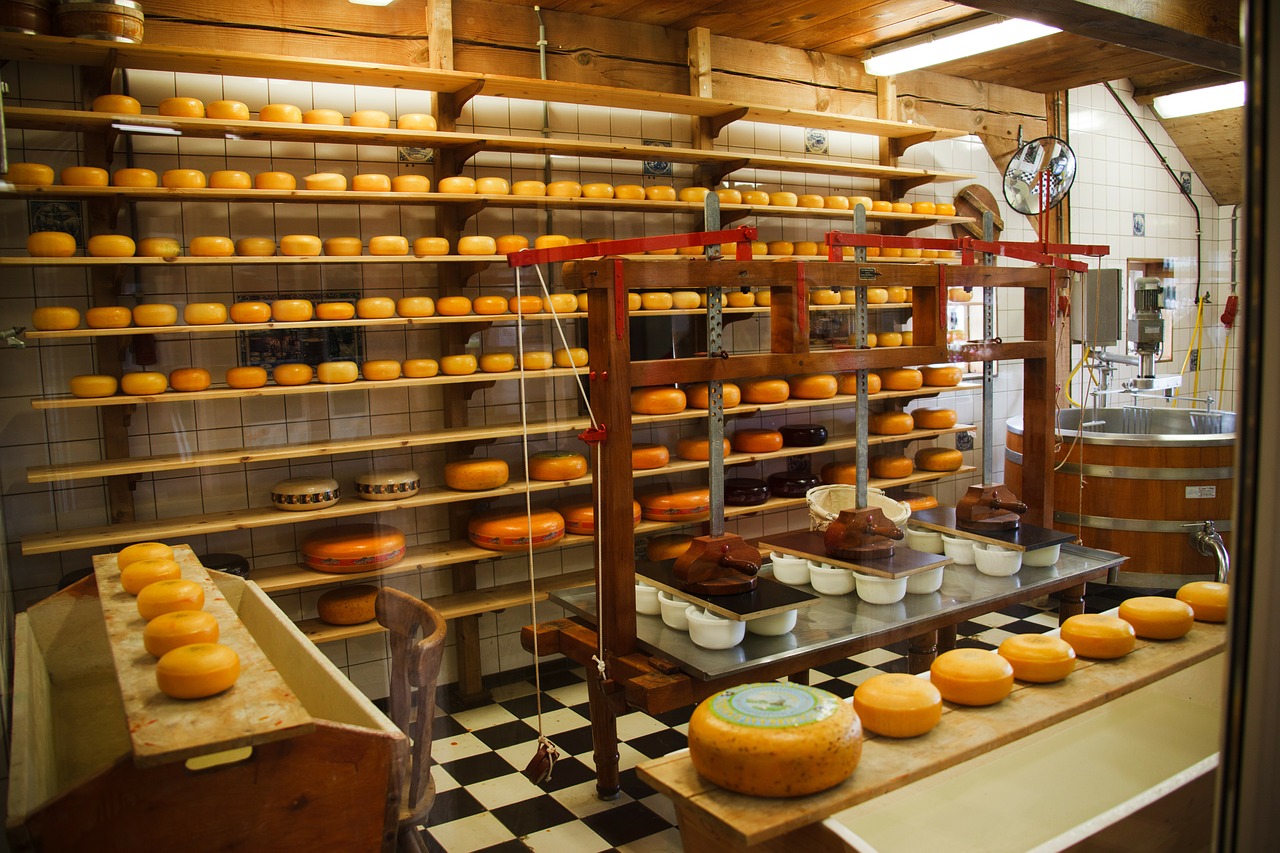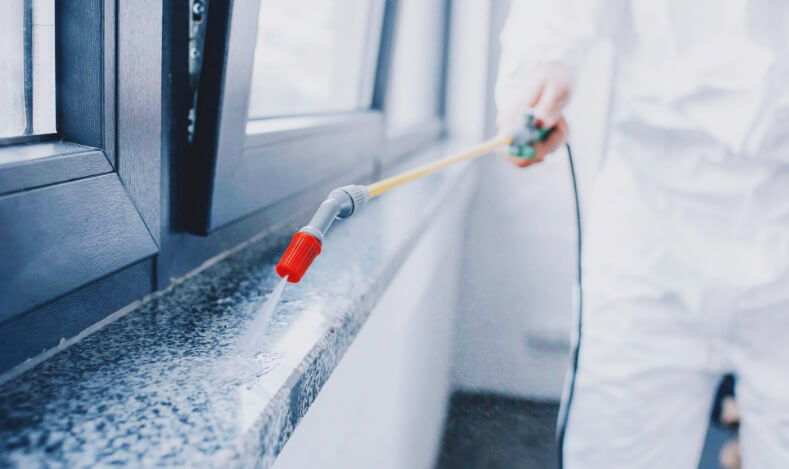
HACCP and Food Safety in Restaurants
April 29, 2015
WARNING! Aggressive Aedes Strain is BACK
January 29, 2016This article talks about the steps that should be taken to ensure food safety in the food industry. IKARI has almost 4 decades of experience in low-toxic pest elimination in the F&B industry and we have the expertise and equipment to be your pest control partner. Call us at +(65) 67431313 for your pest elimination needs.
Keys to Effective Pest Management in the Food Industry
By Cindy Mannes, Mark “Shep” Sheperdigianis, and James E. Sargent, Ph.D.
Source: http://www.foodsafetymagazine.com/magazine-archive1/augustseptember-2003/keys-to-effective-pest-management-in-the-food-industry/
Pests in food retail, processing and distribution facilities are not just nuisances; they can lead to significant product loss, regulatory action and a public relations nightmare. Every day we find ourselves under the gun to save time and money. Unfortunately, neglecting your pest and sanitation issues might not only spoil your products, but ruin your most valuable asset–your good name.
Proper pest management is a vital step in your ongoing food and beverage quality assurance process. An investment in professional pest management strategies yields several significant benefits, including effective food safety and quality assurance in the plant, reduced risk of product loss, and enhanced brand reputation and consumer satisfaction. Every dollar spent on quality pest prevention will, most likely, return additional dollars in reduced product loss. This fact quickly illustrates that managing pests is actually an investment and not expenditure.
Food Safety and IPM
With a million species of insects on the face of the earth, there are many species that have come to rely on humans to provide their sustenance. There are dozens of different species of beetles and moths that infest grain and processed grain products. Some of these pests, like the red flour beetle, prefer the interior of food processing machinery, while others, such as the Indian meal moth, thrive in warehouse and retail food store environments. It’s not just grain products that are at risk from pests; dried meat and other high protein products attract their own varieties of vermin. They don’t need to live in our products to become pests either; pests such as the foreign grain beetle and yellow meal worm develop in spillage and scrap. There are minute little pests that can present immense problems by breeding moist conditions surrounding the food plant environment, such as the diminutive psocids (pronounced SO-sids) and the near microscopic cheese mites. Then there are all the usual suspects; those pests that afflict industry and homes alike. Rats, mice, ants and roaches comprise the more commonly known pests and are all charter members of the food producer rogues’ gallery of pests.
As part of a food plant’s sanitation program, a successful pest management program should incorporate an Integrat-ed Pest Management (IPM) approach, which addresses both the exterior and interior of a building. Integrated Pest Management is a broad approach to pest management that focuses on addressing the reason that the pest problem exists rather than on just the pest itself. IPM accomplishes this by eliminating the three things pests need to survive: food, water and shelter.
There are five common steps involved in practicing IPM. They include inspection, pest identification, the establishment of pest tolerance levels, implementation of an effective control strategy (such as caulking cracks in sidewalks or walls, moving dumpsters away from buildings and appropriate pesticide applications), and an evaluation of effectiveness. To be acceptable, the pest management measures must be both environmentally compatible and economically feasible. The method of IPM removes at least one of the three elements that pests need to survivefood, water, and shelter sources. Food and beverage industry facilities by nature of design are rife with these sources. Eliminating food, water or shelter can significantly reduce the risk of pest infestation.
The urban pest management industry has been protecting health and property for almost 150 years. In that span of time, a number of different strategies and protocols have been used. The state-of-the-art in urban pest management is call Integrated Pest Management. Integrated pest management truly integrates various methods working in combination within a single program. IPM was born in agriculture but has been adapted to almost every discipline under a broad pest management umbrella. Urban pest management was a natural for IPM as even 100 years ago it was recognized how important it was to combine methods.
Prevention Steps
There are several ways that food companies can reduce the potential for pest infestation in their facilities, prevention being the most critical. Prevention takes on many forms. The two most basic are exclusion and sanitation–keeping them out and keeping it clean. Keeping the pests outside, along with excellent sanitation inside, helps prevent infestation and leads to a more organized, more efficient and safer work place.
Proper pest management must be practiced at every step of the food and beverage manufacturing process, from procurement of raw materials to palletizing and shipping the finished product. To assure pest-free products, it also is important to be familiar with pest management practices of suppliers. Suppliers should adhere to their own sanitation and insect control practices, and incoming materials must be inspected thoroughly to ensure they are free from pests. Raw materials should be segregated and inspected for any sign of infestation. During processing and packaging, the products must pass through internal control points determined by a Hazard Analysis & Critical Control Points (HACCP) program. Trucks should be carefully inspected for pests before packaging or raw materials are unloaded and before product is shipped.
On the Outside. If we prevent pests from living outside the facility, there will be fewer incidents of pests entering the facility. The exterior area around a facility (within 50 feet) should be kept free of litter, excessive foliage and standing water sources. Mulch, which can provide a burrowing area for rodents and other pests, should be replaced with rock on perforated plastic directly adjacentto the building. Any foliage that you deem necessary should be maintained at a height of less than three inches with proper drainage provided. Trash should be removed from the facility on a timely basis and the garbage containers, including dumpsters, should be kept clean and covered when not in use.
Anything that can be done to attract fewer pests to the building will pay big dividends in preventing immigrant pest pressures. Roofs and walls should be in good repair and free from bird nesting sites. Exterior lights can serve as a beacon for unwanted pests, so be sure that they are not positioned above entryways, but set back from the building and directed towards the building. This attracts insects away from the building towards the light. And, as opposed to more standard mercury vapor exterior lighting, choose yellow (sodium vapor) exterior lighting that will actually attract fewer pests.
Eliminating entry points for pests can further reduce the risk of pest infestations within a facility. Pests often enter buildings through doors and windows so facility doors should be sealed with door sweeps and be self-closing. Doors that must remain open, such as dock doors, should be fitted with air curtains or plastic strip curtains. Facility airflow should be positive at all entry points, which allows insects to be pushed out. Employees should not prop doors open during a shift or during a break. Makeup air should be filtered so insects are not blown inside.
On the Inside. Spiders, cockroaches, ants, flies, and even termites can threaten the integrity of a product. To avoid these, sound sanitation measures, proper pest management techniques and other Good Manufacturing Practices (GMPs) should be followed. Inside the facility, floors should be in good repair, free of product and other residue. Cracks should be caulked and sealed, especially at floor/wall junctions. Product spills should be addressed immediately, and empty product pallets should be stored away from other products and removed as soon as possible. Products and materials should be stored away from windows and walls to reduce the risk of contamination.
In the Bag. Stored product pests are also a concern for facilities with dry storage.Weevils, beetles and moths can inflitrate bagged meal and powdered food product. Once introduced to the facility, they can spread to other susceptible product as fertilized females seek out new breeding sites. Consistent monitoring of these storage areas is crucial for detecting these pest issues. The two most common methods for monitoring stored product pests are visual inspections through physical examination and the use of pheromone traps. Phero-mones are chemicals insects (and other animals) use to communicate with each other. Many stored product pest females use pheromones to attract mates. These pheromones can be synthesized and used to attract males and trap them in a sticky trap. This will alert a vigilant pest management professional to the presence of pests.
Stock should be rotated frequently in storage areas, using the First In, First Out (FIFO) technique. This single technique is probably the greatest weapon against stored product pests as most of them require four to six weeks to develop into adults. Storage shelves should clean and free of dust. Spillage should be diligently sought out and cleaned up.
When Prevention Isn’t Enough
Proper prevention and exclusion methods may not be enough to deter the most evasive of pests. A qualified pest control professional can provide valuable guidance on eliminating pest populations. The pest control industry’s continued commitment to research and development has spawned a new generation of products that are low dose, highly effective and U.S. Environmental Protection Agency approved for use in food processing establishments. Pheromones, as mentioned earlier, are used to trap insects and monitor for their presence. Insect growth regulators are used to manipulate the insects own metabolism by using their own body chemistry against them. Several types of insect juvenile hormone analogs can applied to prevent certain insects from developing to maturity. Current baiting technologies have revolutionized (again) the control and management of certain pests. Cockroach baiting systems have relegated the once feared German cockroach to the status of a minor pest. While it is unlikely that we will ever drive the German cockroach to extinction, we are currently winning all the battles. Ants are quite susceptible to the new baiting systems, but several new non-repellant contact insecticides also show tremendous promise. However, a continuous parade of invasive species of ants and other insects keep the urban pest management industry and supporting academics on their toes.
Food safety and quality assurance professionals should select a licensed and insured professional pest management firm. An experienced pest management professional who specializes in commercial accounts can assist with interior and exterior inspections for signs of pest infestations, spotting everything from conducive conditions to signs of stored product pests. Detailed records of all pest activity and control methods should be kept, and the pest control company should provide detailed service reports, recommendations for control, and when requested, labels and Material Safety Data Sheets (MSDS) for any pesticide used within the facility. As with any business relationship, the key to a successful partnership with a pest management professional is communication. A clear understanding of priorities will put you one step closer to running a facility that is free from pests.
Cindy Mannes is Public Affairs Director for the National Pest Management Association (NPMA), a non-profit organization with more than 6,000 members companies representing pest management companies, distributors and manufacturers (www.pestworld.org).
Mark “Shep” Sheperdigianis Vice President of Technical Services with Rose Exterminator Co. of Troy, MI. For the past 20 years, he has been working in the urban and structural pest management industry and has held a variety of positions including technician, staff entomologist and technical director.
James E. Sargent, Ph.D., is Director of Technical Support and Regulatory Compliance with CopesanSpecialists In Pest Solutions, based in Brookfield, WI. As an extension entomologist with the Ohio State University from 1978 to 1983, Sargent specialized in the management of urban and post-harvest pests, stored product pest management research and food safety.
=================================
Call IKARI at +(65) 67431313 to effectively eliminate pests from your establishment and prevent future infestations.
==================================




